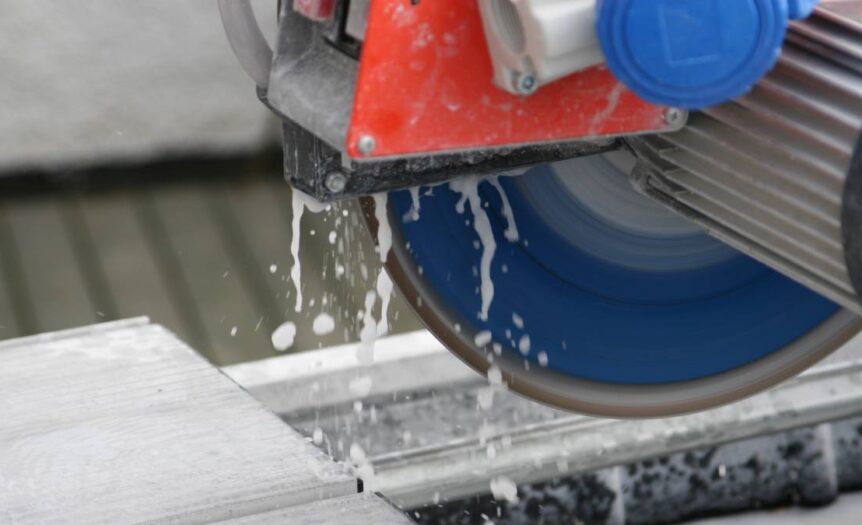Operating blade saws is a crucial task in various industries, from metalworking to construction. These powerful tools are indispensable but come with their fair share of risks. This quick read will focus on the primary safety concerns when operating blade saws, targeting safety managers, blade saw users and professional metalworkers. We’ll cover everything from understanding the risks to operational best practices, with the goal of providing valuable insights into safer operations and working environments.
The Unique Demands of Blade Saws
Blade saws are essential in many industrial applications due to their efficiency and precision. Whether you’re cutting metal, wood, or other materials, blade saws provide the accuracy needed for high-quality work. However, their importance does not overshadow the significant safety concerns associated with their use.
Understanding the Risks Associated With Saw Blades
Operating blade saws poses several safety hazards, including cuts, amputations, and eye injuries. Some statistics show a high number of workplace accidents involving saws, which emphasizes the need for proper safety measures.
Proper equipment and machine training is crucial to prevent these accidents. Users must be well-versed in the machine’s operation and the potential risks involved.
The Critical Role of Saw Blade Maintenance
Maintaining your blade saws is vital for preventing accidents. Regular inspections and proper tool care can significantly reduce the risk of malfunctions. Every job should begin with newly sharpened saw blades to ensure optimal performance and safety.
Dull blades can cause the saw to kick back, which increases the chances of injury. Therefore, keeping your saw blades in excellent condition is non-negotiable for safe operations.
Personal Protective Equipment (PPE)
Using the right personal protective equipment (PPE) is a fundamental aspect of operating blade saws safely. Essential PPE includes safety goggles, gloves, and face shields. These items protect against debris, sparks, and accidental contact with the blade.
Correct usage and regular maintenance of PPE are equally important to ensure their effectiveness. For instance, damaged gloves or worn-out goggles may hinder safety, making it imperative to check your gear before each use. It’s vital to replace damaged gear immediately to maintain safe working conditions.
Best Practices for Safe Blade Saw Operation
Following operational best practices can drastically improve safety while using blade saws. Make sure the work area is clean and free of obstructions.
Safe cutting techniques, such as maintaining a steady hand and using both hands to control the saw, are paramount. Do not ignore adequate focus and attention when using the blade saw. Distractions can lead to severe accidents, so always remain vigilant and attentive while using the saw.
The Psychological Aspect of Safety
The human factor plays a significant role in workplace safety, and understanding and fostering a safety-first culture can prevent many accidents. Encourage team members to follow safety protocols and report any unsafe conditions immediately.
Providing regular safety training sessions can also keep everyone updated on the best practices and the latest safety measures. A proactive approach toward safety can make a world of difference.
The safe operation of blade saws involves understanding the risks, maintaining the equipment, using appropriate PPE, and following operational best practices. The human factor is equally crucial, as a safety-first culture can significantly reduce workplace accidents. Factor these safety concerns into your blade saw operations to make sure everyone remains healthy and productive.










 Deering Estate
Deering Estate
 Massage Envy South Miami
Massage Envy South Miami
 Calla Blow Dry
Calla Blow Dry
 My Derma Clinic
My Derma Clinic
 Sushi Maki
Sushi Maki
 Sports Grill
Sports Grill
 The Healthy Kitchen
The Healthy Kitchen
 Golden Rule Seafood
Golden Rule Seafood
 Malanga Cuban Café
Malanga Cuban Café

 Kathleen Ballard
Kathleen Ballard
 Panter, Panter & Sampedro
Panter, Panter & Sampedro
 Vintage Liquors
Vintage Liquors
 The Dog from Ipanema
The Dog from Ipanema
 Rubinstein Family Chiropractic
Rubinstein Family Chiropractic
 Your Pet’s Best
Your Pet’s Best
 Indigo Republic
Indigo Republic




 ATR Luxury Homes
ATR Luxury Homes


 2112 Design Studio
2112 Design Studio
 Hamilton Fox & Company
Hamilton Fox & Company
 Creative Design Services
Creative Design Services
 Best Pest Professionals
Best Pest Professionals
 HD Tree Services
HD Tree Services
 Trinity Air Conditioning Company
Trinity Air Conditioning Company
 Cisca Construction & Development
Cisca Construction & Development
 Mosquito Joe
Mosquito Joe
 Cutler Bay Solar Solutions
Cutler Bay Solar Solutions


 Miami Royal Ballet & Dance
Miami Royal Ballet & Dance
 Christopher Columbus
Christopher Columbus
 Pineview Preschools
Pineview Preschools
 Westminster
Westminster
 Carrollton
Carrollton
 Lil’ Jungle
Lil’ Jungle
 Frost Science Museum
Frost Science Museum
 Palmer Trinity School
Palmer Trinity School
 South Florida Music
South Florida Music
 Pinecrest Orthodontics
Pinecrest Orthodontics
 Dr. Bob Pediatric Dentist
Dr. Bob Pediatric Dentist
 d.pediatrics
d.pediatrics
 South Miami Women’s Health
South Miami Women’s Health

 The Spot Barbershop
The Spot Barbershop
 My Derma Clinic
My Derma Clinic




 Miami Dance Project
Miami Dance Project

 Rubinstein Family Chiropractic
Rubinstein Family Chiropractic
 Indigo Republic
Indigo Republic

 Safes Universe
Safes Universe
 Vintage Liquors
Vintage Liquors
 Evenings Delight
Evenings Delight





 Atchana’s Homegrown Thai
Atchana’s Homegrown Thai
 Baptist Health South Florida
Baptist Health South Florida

 Laser Eye Center of Miami
Laser Eye Center of Miami
 Visiting Angels
Visiting Angels
 OpusCare of South Florida
OpusCare of South Florida

 Your Pet’s Best
Your Pet’s Best





 HD Tree Services
HD Tree Services
 Hamilton Fox & Company
Hamilton Fox & Company


 Creative Design Services
Creative Design Services